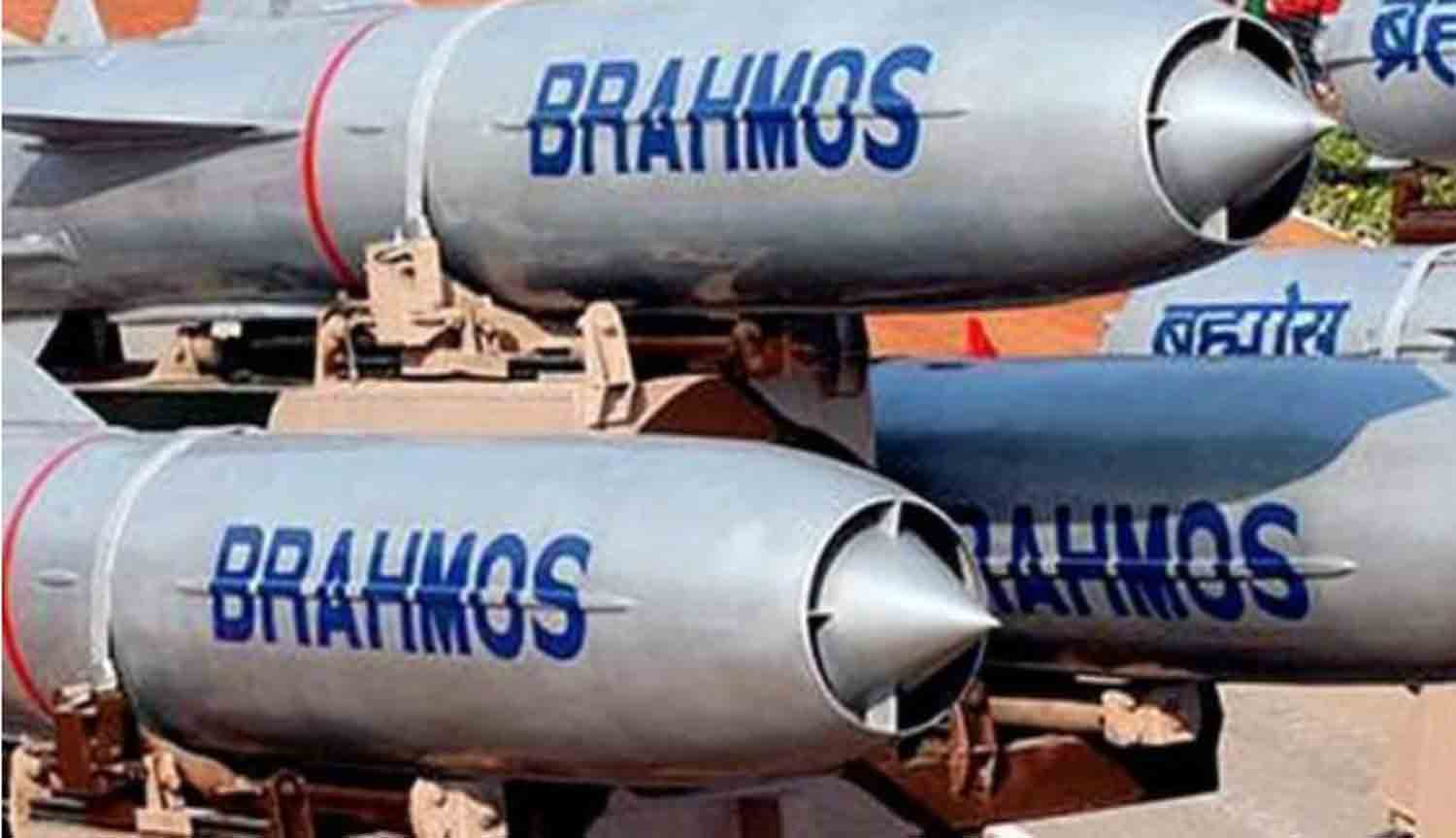India has successfully delivered a second batch of BrahMos supersonic cruise missiles to the Philippines, representing a notable advancement in a $375 million defense agreement established in January 2022. This shipment, which arrived by sea, follows the first delivery made in April 2024 and highlights India’s expanding influence as a global arms supplier.
For the Philippines, a country that has traditionally depended on U.S. military assistance, the procurement of these sophisticated weapons indicates a strategic shift towards diversifying its defense alliances.
The BrahMos system, which can hit targets located 290 kilometers away at speeds approaching three times the speed of sound, provides Manila with an enhanced deterrent capability in the increasingly unstable Indo-Pacific region. While this development stems from a bilateral arrangement, it has wider implications for regional security and the changing landscape of the global arms market.
The BrahMos missile, developed through a collaboration between India’s Defence Research and Development Organisation (DRDO) and Russia’s NPO Mashinostroyeniya, is a highly adaptable and powerful weapon. Named after the Brahmaputra and Moskva rivers, it reaches speeds of Mach 2.8, or approximately 3,400 kilometers per hour, making it one of the fastest supersonic cruise missiles available.
With a range of 290 kilometers, it can target locations well beyond the horizon, and its capability to be launched from various platforms—land, sea, air, or submarines—enhances its operational versatility. The missile is equipped with a 200-kilogram warhead, allowing for accurate strikes against both maritime and land targets.
In contrast to subsonic missiles like the U.S.-made Harpoon, the BrahMos’s high speed significantly shortens the response time for enemy defenses, making interception exceedingly challenging. Its low-altitude flight path, which hovers just above the ocean surface, further boosts its stealth and effectiveness against naval targets.
For the Philippines, which maintains a relatively small navy and encounters difficulties in monitoring its extensive maritime territory, the BrahMos missile system significantly enhances its coastal defense capabilities.
The recent delivery includes components for the second of three missile batteries outlined in the 2022 contract, featuring mobile launchers mounted on Tatra 6×6 vehicles, command-and-control systems, and integrated logistics support.
The Philippine Marine Corps, which received the initial batch last year, has already participated in comprehensive training in India to operate and maintain the system. Unlike the standard configuration utilized by the Indian military, which consists of three launchers per battery, the Philippine version has been modified to include two launchers per battery, specifically designed for the tropical conditions of the archipelago.
This adaptation demonstrates the practical considerations necessary for deploying advanced weaponry in a country with limited defense infrastructure. The training, led by Indian experts, emphasized both operational tactics and long-term maintenance, ensuring that Filipino personnel can independently sustain the system.
The transfer of knowledge is a vital component of the agreement, as it enables the Philippines to incorporate the BrahMos into its overall defense strategy without becoming overly dependent on foreign assistance.
To grasp the importance of this acquisition, one must recognize the distinct challenges the Philippines faces. The nation comprises over 7,000 islands, covering a vast maritime area, much of which is situated within the contested South China Sea.
Manila has been actively pursuing the modernization of its military forces, which have historically depended on outdated technology and constrained budgets. The BrahMos system, particularly its shore-based anti-ship variant, empowers the Philippines to exert influence from strategic coastal areas like Palawan and Luzon, effectively covering vital maritime routes.
From these strategic points, the missile’s range of 290 kilometers can dominate significant portions of the Philippines’ exclusive economic zone, serving as a credible deterrent against potential naval threats.
The system’s mobility, facilitated by truck-mounted launchers, allows for swift repositioning, complicating efforts for adversaries to anticipate or counter its locations. This advancement represents a significant improvement for a military that has faced challenges in asserting its presence in contested waters.
When comparing the BrahMos to other regional missile systems, its technological superiority becomes evident. The U.S. Harpoon, a staple in Western navies, has a range of approximately 120 kilometers and a subsonic speed of around 850 kilometers per hour.
Although reliable and widely used, the Harpoon is less effective against contemporary air defense systems due to its slower speed and predictable trajectory. In contrast, China’s YJ-12, another supersonic anti-ship missile, offers a range and speed comparable to the BrahMos but is primarily launched from naval and aerial platforms, which limits its versatility compared to the multi-platform capabilities of the BrahMos.
Norway’s Naval Strike Missile (NSM), utilized by several Southeast Asian navies, is known for its stealth and accuracy, though it has a limited range of approximately 185 kilometers and operates at subsonic speeds.
In contrast, the BrahMos missile stands out due to its impressive speed, extended range, and adaptability, providing the Philippines with a capability to confront larger and more sophisticated naval forces. This acquisition elevates Manila’s status among regional military powers, enabling it to project military strength in ways that were previously not possible.
The choice to procure BrahMos from India, instead of depending solely on traditional suppliers like the United States, indicates a strategic pivot. The Philippines has maintained a long-standing alliance with the U.S., supported by a mutual defense treaty and the presence of American troops under the Enhanced Defense Cooperation Agreement. Recent joint military exercises and the introduction of U.S. Typhon missile systems in the Philippines highlight the robustness of this alliance.
However, Manila’s decision to invest in Indian defense technology reflects a strategic intent to diversify its military resources, thereby decreasing reliance on a single supplier. The BrahMos contract, valued at $375 million, is competitively priced compared to Western alternatives, delivering high performance at a more affordable cost.
Additionally, India’s readiness to offer training and logistical assistance aligns with the Philippines’ requirements for sustainable, long-term defense solutions. This decision does not indicate a deterioration of U.S.-Philippine relations but rather represents a practical strategy to enhance the country’s defense capabilities.
Russia’s participation in the BrahMos program introduces additional complexity to the agreement. This missile, developed through a collaborative effort, utilizes Russian propulsion technology and guidance systems, while India has contributed to its airframe and electronic components.
Currently, approximately 83% of BrahMos components are produced domestically in India, reflecting the nation’s commitment to achieving defense self-sufficiency. Nevertheless, the involvement of Russia raises concerns for the Philippines, which has traditionally refrained from acquiring Russian military equipment due to geopolitical factors, about how it will manage this partnership.
The hybrid design of the BrahMos enables Manila to access technology derived from Russia indirectly, allowing it to avoid direct transactions with Moscow while still benefiting from a reliable system. This situation underscores the intricate compromises countries must navigate in the global arms market, balancing their technological requirements with diplomatic realities.
For India, this deal exemplifies its capacity to utilize international collaborations to enhance its defense exports, aligning with its “Make in India” initiative.
The delivery of BrahMos is part of a larger trend of militarization in the Indo-Pacific region, where countries are striving to strengthen their defenses in response to evolving power dynamics. For example, Vietnam is reportedly close to finalizing a $700 million agreement to acquire BrahMos coastal batteries, following a similar strategy as the Philippines.
Indonesia has also shown interest, with discussions for a $450 million deal gaining traction after a high-level delegation visited BrahMos Aerospace in January. These developments indicate the formation of a loose coalition among Southeast Asian nations, supported by Indian technology, aiming to address regional security challenges.
In contrast to alliances led by Western nations, which frequently involve political conditions, India’s strategy focuses on providing cost-effective, high-impact systems without requiring explicit ideological alignment. This adaptability makes the BrahMos missile an appealing choice for nations that are reluctant to fully commit to either the U.S. or China.
The historical background of the BrahMos program sheds light on its importance. Initiated in 1998, the collaboration between India and Russia aimed to develop a missile capable of competing with the world’s best. Although early models encountered technical difficulties, by the 2000s, the BrahMos had demonstrated its reliability through rigorous testing.
India’s military has successfully deployed the missile on various platforms, including warships, submarines, and Su-30 fighter jets. Its success led India to pursue export opportunities, with the Philippines becoming the first international customer in 2022.
The missile’s export potential increased after India became a member of the Missile Technology Control Regime in 2016, which relaxed restrictions on the sale of long-range systems. Currently, BrahMos Aerospace is working on a next-generation variant, the BrahMos-NG, which is expected to feature a lighter design and compatibility with smaller platforms.
Additionally, a hypersonic variant, the BrahMos-II, is under development, which could significantly enhance the missile’s capabilities with speeds surpassing Mach 5. These developments reflect India’s ambition to lead in missile technology, influencing its position as a defense supplier.
For the Philippines, acquiring the BrahMos marks a significant step in its military modernization initiatives. The armed forces, historically underfunded, have faced challenges in replacing outdated equipment inherited from the U.S. and other allies.
The 2012 standoff at Scarborough Shoal with China highlighted Manila’s weaknesses, leading to efforts to bolster its maritime defenses. The BrahMos agreement, along with plans to procure submarines and additional missiles, demonstrates a commitment to establishing a credible deterrent.
General Romeo Brawner Jr., the head of the Armed Forces of the Philippines, has highlighted the necessity for advanced systems to address aggressive maritime activities, although securing funding poses a significant challenge. The BrahMos missile, known for its affordability and substantial impact, presents a viable option for a resource-limited nation, serving as a force multiplier that strengthens Manila’s strategic capabilities.
The implications of the BrahMos agreement extend beyond national borders. Southeast Asia is currently experiencing a discreet yet intense arms race, fueled by maritime disputes and the imperative to safeguard essential trade routes.
Countries such as Vietnam, Indonesia, and Malaysia, which have overlapping territorial claims in the South China Sea, are actively modernizing their naval forces and missile inventories. Australia, a crucial ally of the U.S., has made significant investments in long-range strike capabilities, including hypersonic missiles as part of the AUKUS agreement. While the spread of advanced weaponry may stabilize individual nations, it also poses a risk of escalating tensions in an already precarious region.
The introduction of the BrahMos, capable of shifting local power dynamics, may encourage other nations to hasten their own military acquisitions, potentially triggering a wave of increased defense spending. The impact of this development on deterrence versus instability remains uncertain.
India’s emergence as a defense exporter adds another layer to this narrative. Once dependent on foreign military supplies, India has made substantial investments in domestic production, with BrahMos standing out as a notable success.
Samir V. Kamat, the chief of the DRDO, has forecasted that India’s defense exports could reach $6 billion by 2028, driven by the demand for systems like BrahMos. Interest from nations in the Middle East, Africa, and South America highlights the missile’s international appeal.
The acquisition of BrahMos missiles by the Philippines marks a significant turning point for both countries. For Manila, this development signifies a move towards greater military independence, empowering it to confidently uphold its maritime rights. For India, it reinforces its status as a dependable defense ally, demonstrating its competitiveness in the global arms market.
This agreement underscores the complex relationship between technology, geopolitics, and regional security, illustrating how a single missile system can alter alliances and strategic approaches. As Southeast Asia faces a period of uncertainty, the BrahMos missile acts as both a protective measure and a statement, indicating that even smaller nations can exert considerable influence.
However, as more nations gain access to such advanced capabilities, the fragile equilibrium in the region may be at risk. Will the proliferation of sophisticated missiles like BrahMos lead to stability or spark new tensions? Only time will reveal the outcome.
Discover more from Defence Talks | Defense News Hub, Military Updates, Security Insights
Subscribe to get the latest posts sent to your email.





